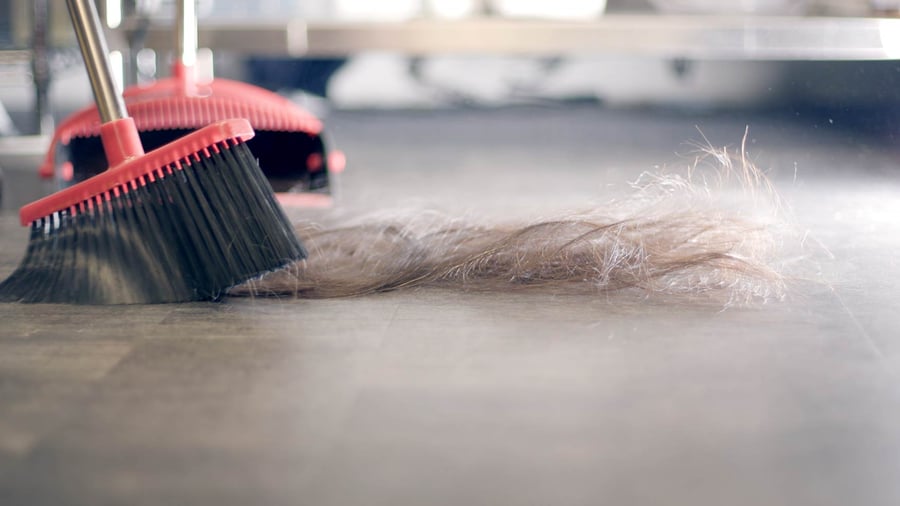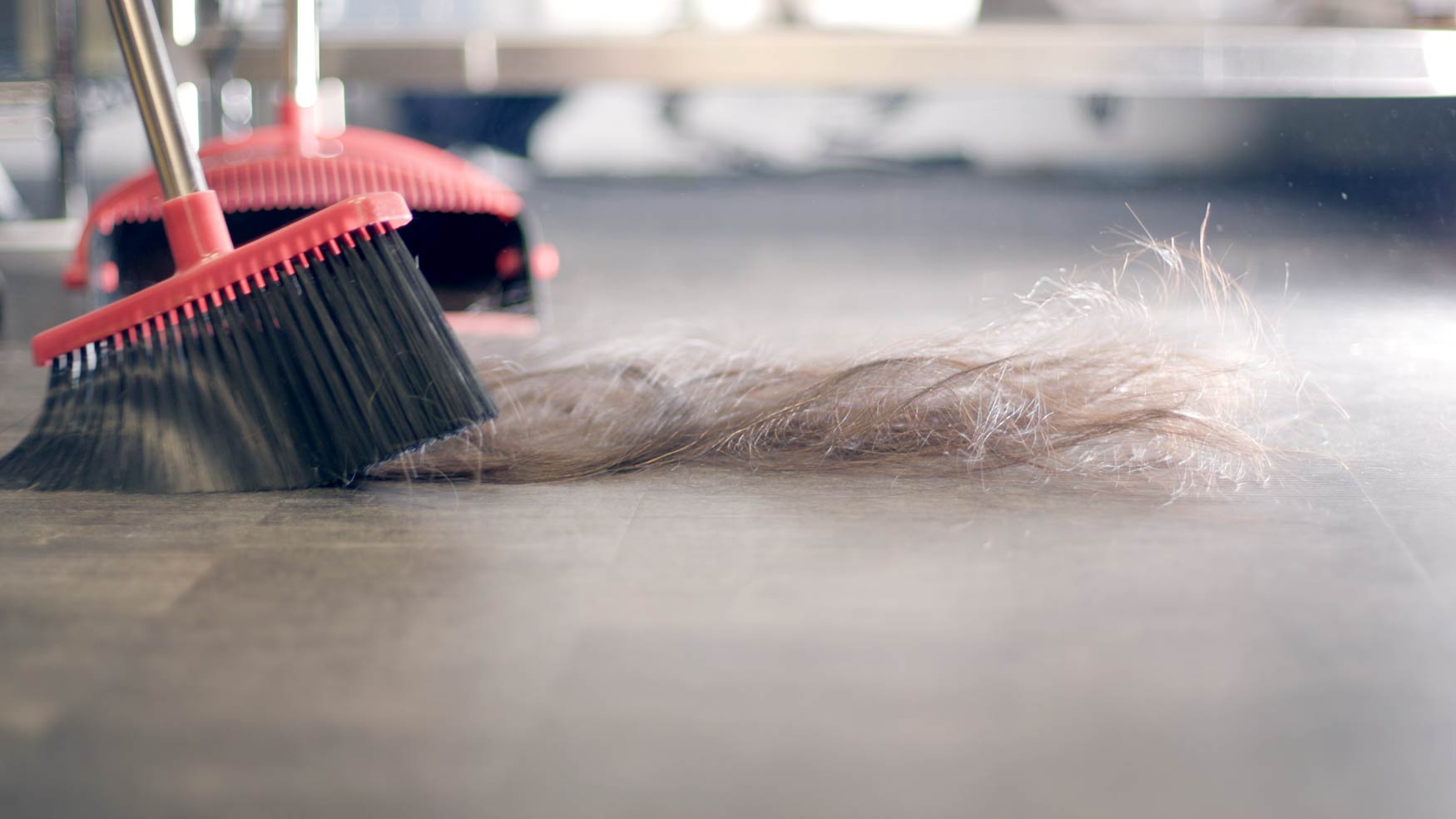Not all human hair used in wigs and toppers is created equal. While it may look similar at first, the way the hair is collected makes a huge difference in quality, longevity, and how natural it feels.
You may have heard of floor hair and ponytail hair, two common types used in wigs and extensions. But what do these terms really mean? And how do they affect the way a wig looks and wears over time?
In this article, we’ll break down the key differences between floor hair and ponytail hair, so you can make an informed choice when investing in a high-quality wig or topper.
What Is Floor Hair?

Floor hair is exactly what it sounds like - hair that has been collected from salon floors, hairbrushes, and even drains. Instead of being cut directly from a donor, it’s gathered from various sources, including temples and hair salons, and then sold in bulk to factories that process it for use in wigs and extensions.
Because floor hair comes from different people and is collected randomly, the strands don’t all run in the same direction. To make it usable, factories put it through heavy chemical treatments, including acid baths to strip the cuticles (the protective outer layer of the hair). Since this process leaves the hair rough and weak, it’s then coated in silicone to make it feel smooth and shiny - but only temporarily.
The biggest downsides of floor hair?
- The cuticles aren’t aligned, so the hair tangles and mats easily.
- The harsh chemical treatments make it brittle and dry.
- The silicone coating washes away after a few washes, leaving the hair dull and coarse.
- It’s commonly used in low-quality wigs, extensions, and hairpieces, which may look nice at first but quickly lose their softness and shine.
If you’ve ever bought a human hair wig or extension that became a tangled mess after a few weeks, there’s a good chance it was made with floor hair.
What Is Ponytail Hair?

Ponytail hair is the gold standard when it comes to high-quality wigs and toppers. Unlike floor hair, which is collected randomly, ponytail hair is cut directly from a donor’s head while secured in a ponytail or braid. This ensures that all the strands stay aligned in the same direction, keeping the hair smooth, soft, and tangle-free.
Because it’s carefully sourced, ponytail hair is more expensive and is usually sold by individuals who grow and sell their hair for a premium price. But this careful sourcing comes with big benefits:
- The cuticles remain intact and aligned, preventing tangles and matting.
- It requires very little processing, so the hair stays strong, silky, and healthy-looking.
- It maintains its shine, softness, and natural movement over time, unlike chemically treated hair.
Ponytail hair is the top choice for premium human hair wigs and toppers, including those made by Daniel Alain. If you’re looking for a wig that looks and feels as natural as possible—and lasts for years—ponytail hair is the best option.
Key Differences Between Floor Hair and Ponytail Hair

Why Does Hair Quality Matter in Wigs and Toppers?
When investing in a wig or topper, the quality of the hair makes all the difference. Whether you want something that lasts for years or simply looks and feels natural, the type of hair used will affect your overall experience.

How to Identify High-Quality Hair in Wigs and Toppers
With so many options out there, how can you tell if a wig is made from high-quality hair? Here are a few key things to look for:
- Check for 100% human ponytail hair – The best wigs are made from hair that has been cut directly from a donor while in a ponytail. If a brand doesn’t specify this, the wig may contain lower-quality hair.
- Look for transparency in sourcing – Reputable brands are clear about where their hair comes from and how it’s processed. If a company doesn’t mention sourcing details, it might be using floor hair or heavily processed strands.
- Avoid wigs that feel too slick or shiny – Some low-quality wigs are coated in silicone to hide damage and make the hair feel temporarily smooth. If a wig looks unnaturally glossy or feels overly silky, the shine may wash away after a few wears, revealing coarse, dry strands.
- Be cautious of prices that seem too low – High-quality human ponytail hair is more expensive because it’s carefully sourced and minimally processed. If you find a human hair wig at a surprisingly low price, it likely contains floor hair or a mix of different types of hair.
Why Does Choosing the Right Hair Matter?
Not all human hair wigs are created equal, and the difference between floor hair and ponytail hair is huge. While floor hair might seem like an affordable option, it often leads to frustration with tangling, dullness, and a short lifespan.
If you’re looking for a wig or topper that looks, feels, and behaves like real hair, ponytail hair is the way to go. Because it’s carefully sourced and minimally processed, it stays soft, smooth, and long-lasting, making it a worthwhile investment.
Understanding hair quality is key when choosing the right wig. From ponytail hair to terms like Remy, virgin, and 100% human hair, the way hair is sourced and processed makes all the difference. If you want to dive deeper into what these labels really mean - and which one is best for you - learning more about the different types of human hair can help you make the most informed choice.


.jpeg)
